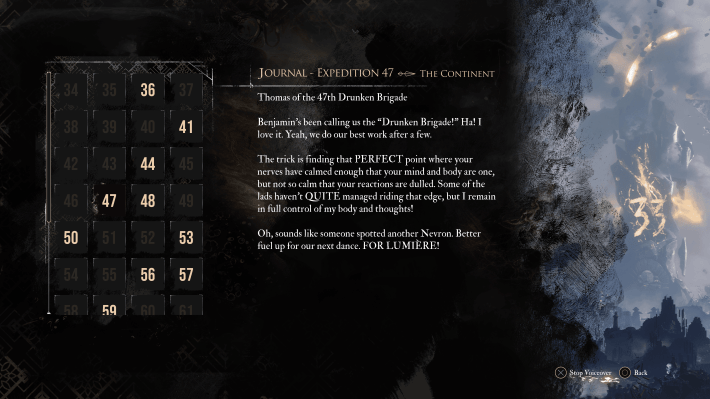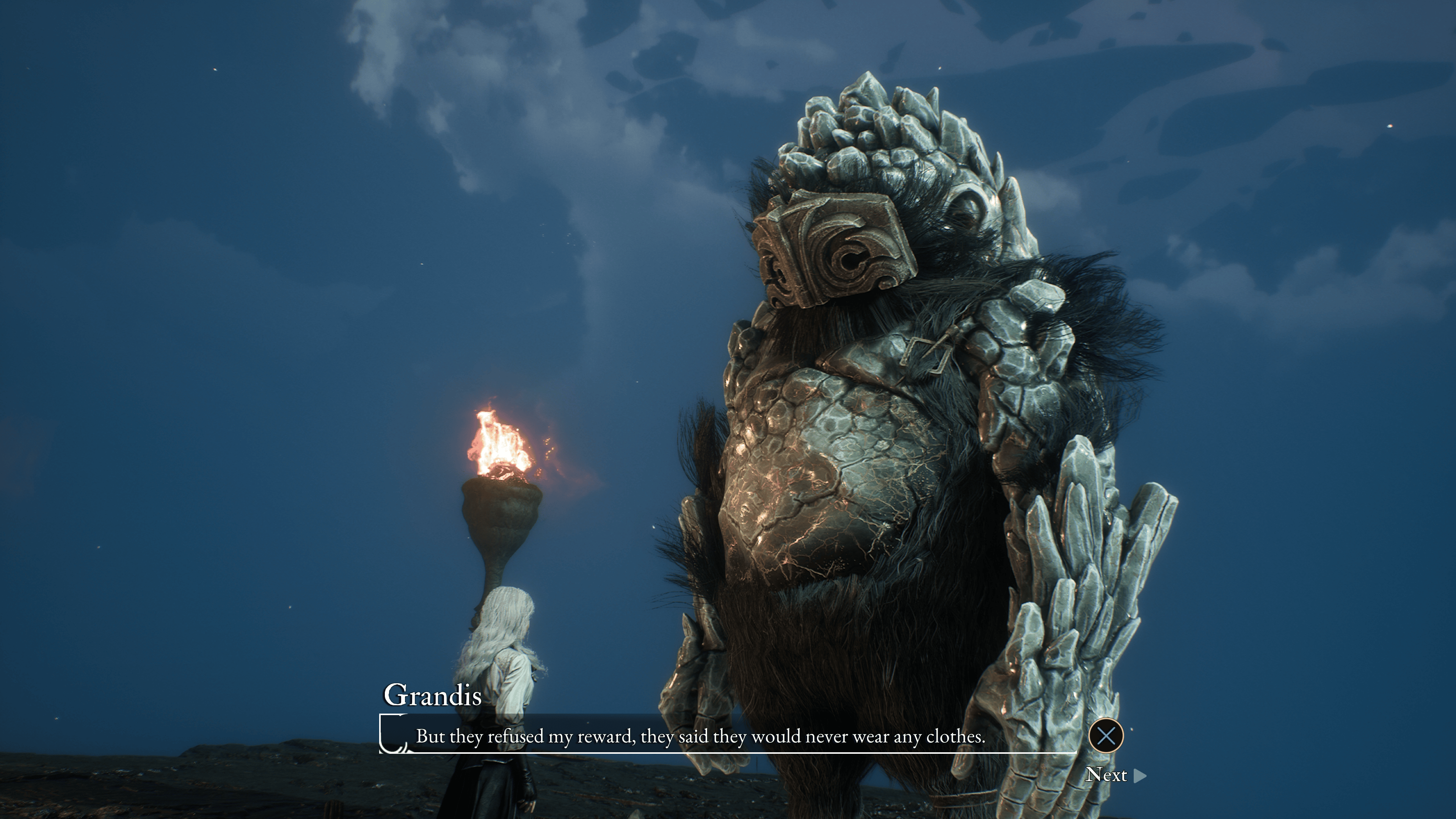Before Clair Obscur: Expedition 33, which has been the talk of the town since launching on April 25, creative director Guillaume Broche was working on a precursor known as We Lost. While technically different projects, this title is still fitting of Clair Obscur’s overall mood. As its protagonists set out from Lumière to try to prevent the godlike Paintress from wiping humanity from existence, the palpable fear among Expedition 33 is that their hard work will, like the voyages before them, simply be a suicidal stepping stone on the path of future generations’ success.
(This piece contains spoilers for Clair Obscur’s journal entries, and some vague late-game spoilers for the end of Act II.)
Not only is this sense of impending failure baked into the mission’s motto, “We lay the trail for those who come after,” but it’s also part of why expeditions keep a journal to leave behind for subsequent expeditions. The average player will stumble upon several of these journals while playing Clair Obscur, each one full of stories describing the actions taken by previous expeditions and, sometimes, the dangers that ultimately defeated them. Not every journal provides useful information: Expedition 36’s entry, for instance, is a beautiful albeit strategically useless poem, while Expedition 47’s merely describes the self-styled “Drunken Brigade’s” theories on maintaining inebriation during battle. But the majority drive home the fact that Expedition 33’s success is predicated not only on their own skills but also the progress made by their predecessors.

Clair Obscur heightens this sense of asynchronous cooperation by plopping its heroes down in hostile, unfamiliar territory and giving them no other choice than to rely on what previous expeditions left behind. Many areas would be impossible to traverse without various handholds and grapple points; the player eventually learns these aren’t natural, but rather manmade features built into the environment by Expeditions 69 and 70. Similarly, a fleshy overpass in a late-game area is revealed as the grisly work of Expedition 35, who used their final moments after falling to a powerful monster to build the walkway over an otherwise unnavigable crevasse with their own corpses.
“So that’s what it means to lay the trail,” Expedition 35’s journal reads, its long-dead author combining gallows humor with numerous passages from the overall mission statement. “They used their bodies to create a bridge for those who come after. Expedition 35 is over but tomorrow comes.”
In that moment, Expedition 33 must literally stand on the shoulders of their ancestors to forge ahead, but the rest of Clair Obscur’s journal entries aren’t quite as gruesome or on-the-nose. Expedition 40 discovered the forcefield surrounding the Paintress’ monolith after two explorers flew into it on hang gliders and were vaporized. Expedition 44 attempted to disguise themselves as monsters, but the real monsters weren’t fooled and cut them down. Expedition 49 focused entirely on healing and defensive skills, only to realize this turtle-like strategy only prolonged their suffering without offensive abilities to quickly dispatch enemies.
None of these journal entries hold a candle to Expedition 60. While much of Expedition 33’s success comes from its use of the Lumina Converter, the in-universe tool that powers Clair Obscur’s Picto trait customization system, Expedition 60 was able to make it all the way to the Paintress without such frivolity. They even managed to break through the barrier surrounding her monolith through pure strength alone, and did it all while entirely naked to boot. I’ve included the entire text of the journal below because there’s no way a mere summary could do it justice.
They mocked us when we said the human body is the strongest of them all. We trained relentlessly and now our bodies have achieved the pinnacle of human performance, with which we are able to crush our enemies!
We are SO much more agile and aerodynamic without the heavy uniforms constraining our glorious muscles. With Leslie’s unstoppable training regime, WE ARE IMPERVIOUS.
That’s how we were able to charge through that ghostly gommage barrier and reach the Paintress. But it seems we’ve been wrong about what she is. The Paintress is just as trapped as we. The real terror lies beneath the Monolith.
The rest of Expedition 60 marched on to confront him, while I was tasked to warn Lumière. But it seems I might have run out of time. One last swim separates me from Lumière, but even with my mighty muscles, I don’t know if I can outswim the Gommage.
So here I write my final message. Bare naked muscles will save the world! And don’t waste time on the Paintress, aim for the bottom of the Monolith!
Despite a push for more diversity in games, they can often lean libertarian or even conservative in their worldviews. Some, in pursuit of gratifying player power fantasies, fall into subscribing to a version of Thomas Carlyle’s “great man” theory, which argues history belongs to individuals born with superior traits. Clair Obscur’s treatment of its protagonists not as special heroes but as merely the next link in a chain of successes and failures makes for a far richer story than we often see from the medium.

Expedition 33, though perhaps better equipped than those who came before them, are only able to accomplish what they do thanks to the hundreds of reinforcements who paved the way before them. The ability to defeat a boss in seconds with an overpowered build means nothing if you can’t physically reach the enemy in the first place. Knowledge accrued over decades and shared between generations will always trump what one person can do on their own.
Even when previous expeditions haven’t left tangible help, their journals function like military intel for the challenges Expedition 33 faces. Expedition 59's journal cautions against eating defeated monsters, while a member of Expedition 66 left behind similar warnings for poisonous mushrooms they were given by Esquie, a lovable traveling companion you meet halfway into the game who functions like a Final Fantasy airship. The player themselves might even glean insight into how to allocate character stats from, say, the aforementioned Expedition 49, and realize it may be useful to spread points around rather than focus too heavily on a single aspect of a character's build.
In his 1935 poem “Questions From a Worker Who Reads,” writer Bertolt Brecht asks, “Caesar defeated the Gauls. / Did he not even have a cook with him? / Philip of Spain wept when his armada went down. / Was he the only one to weep?” Clair Obscur may not be as overtly political a text as Brecht's Marxist leanings, but it certainly interrogates the view of history – and video game narratives – that singular heroes succeed through their own strength. And much like "Questions," it comes to the same conclusion: None of us, from the wealthy entrepreneur to the struggling freelancer, accomplish anything on our own.


